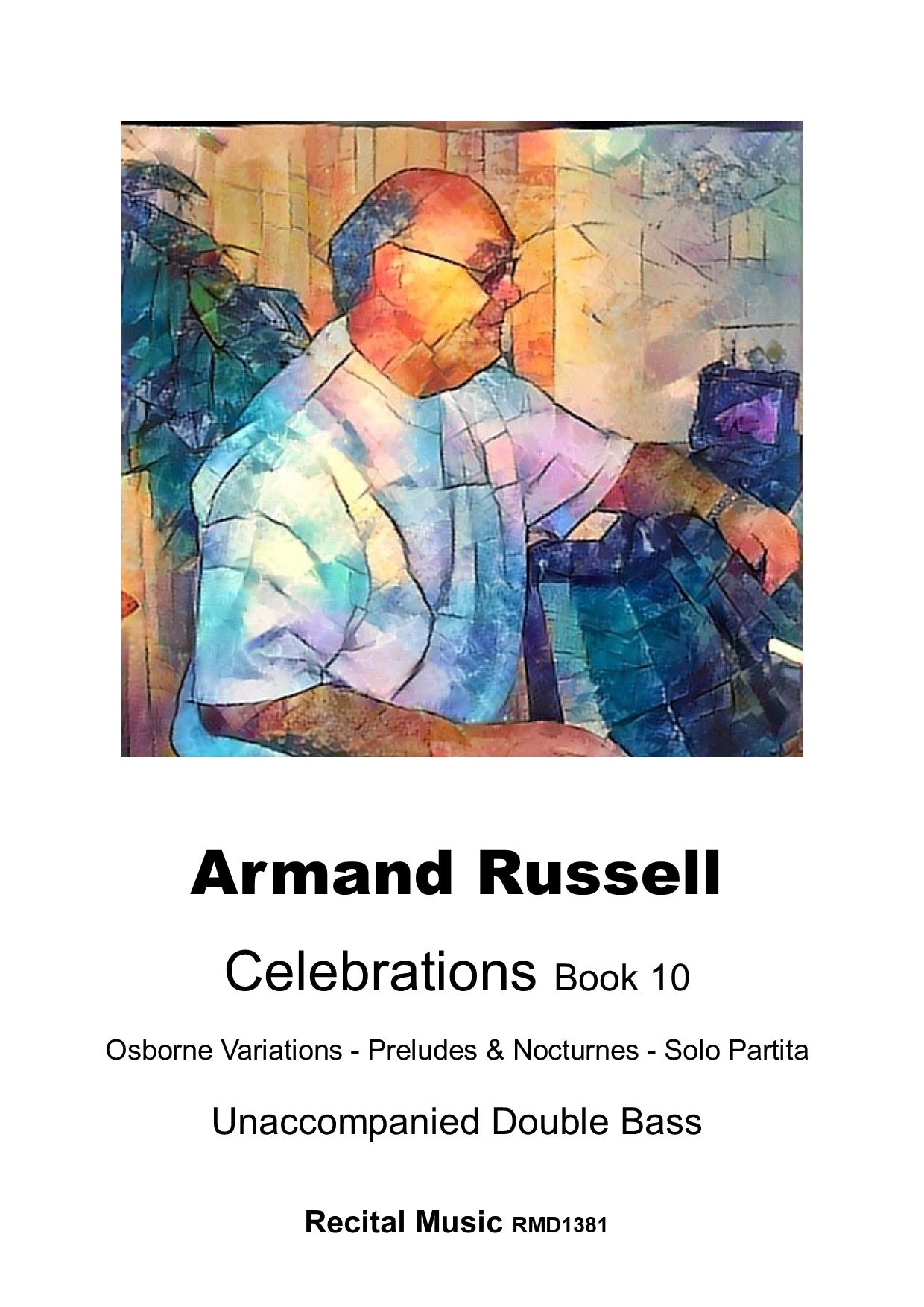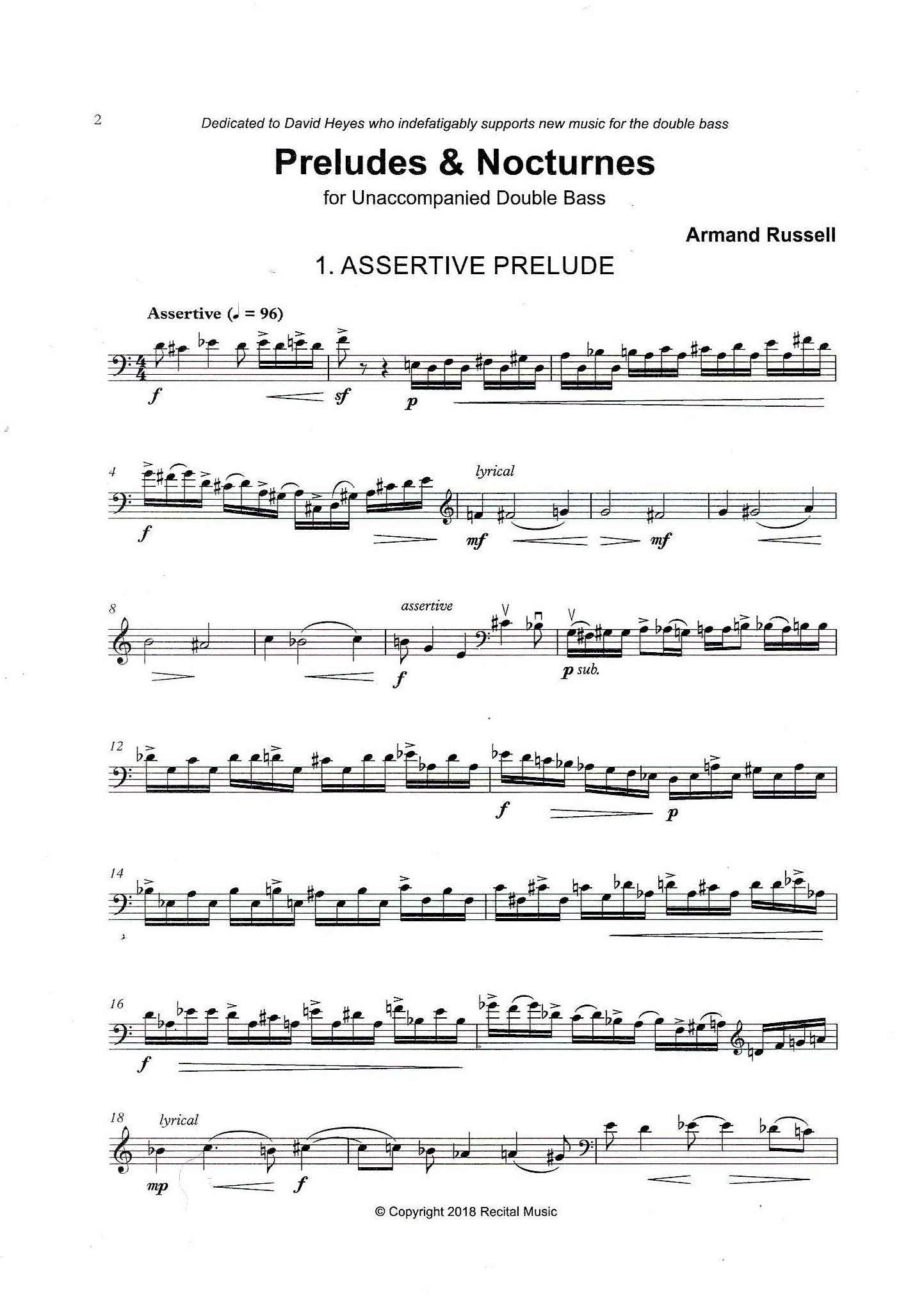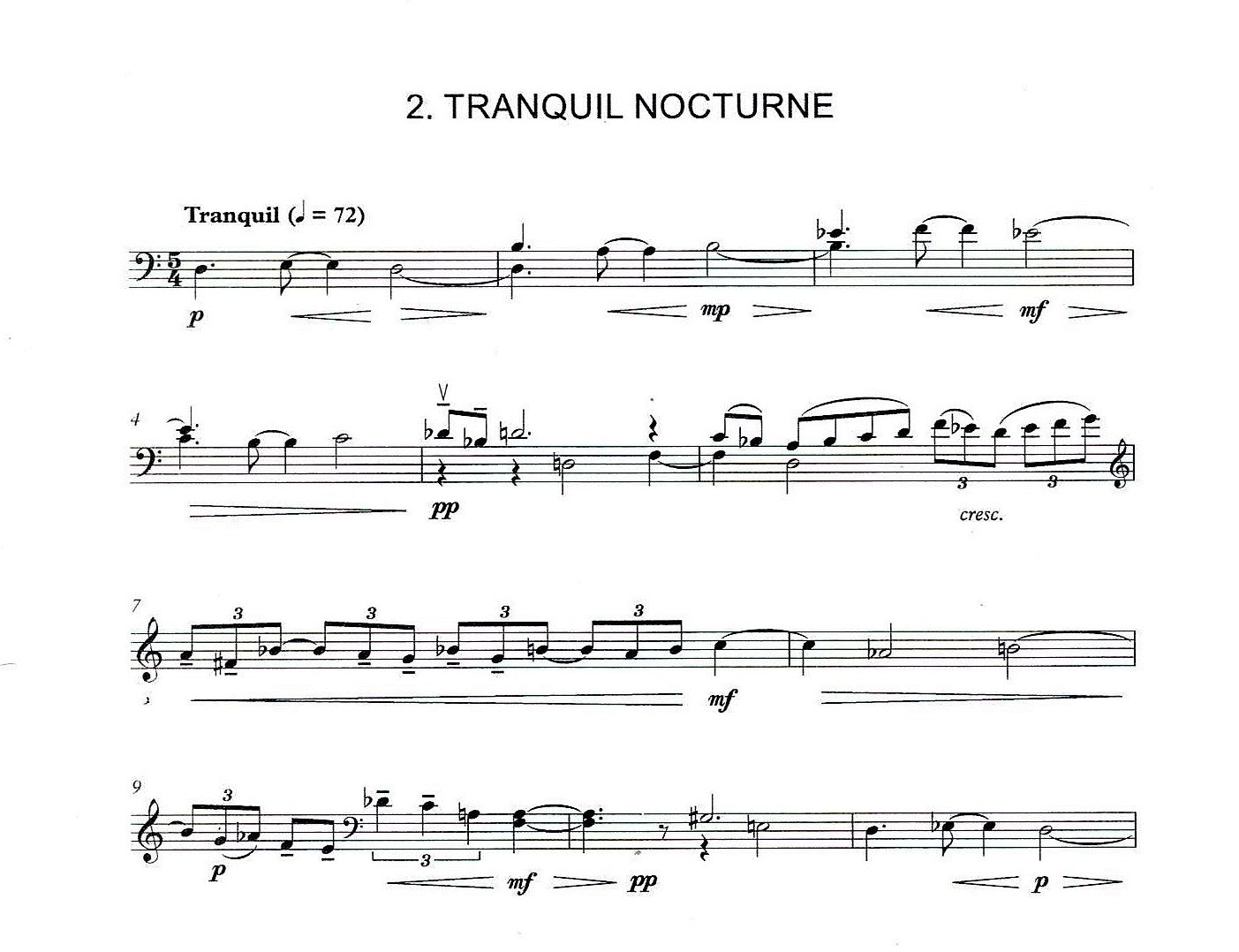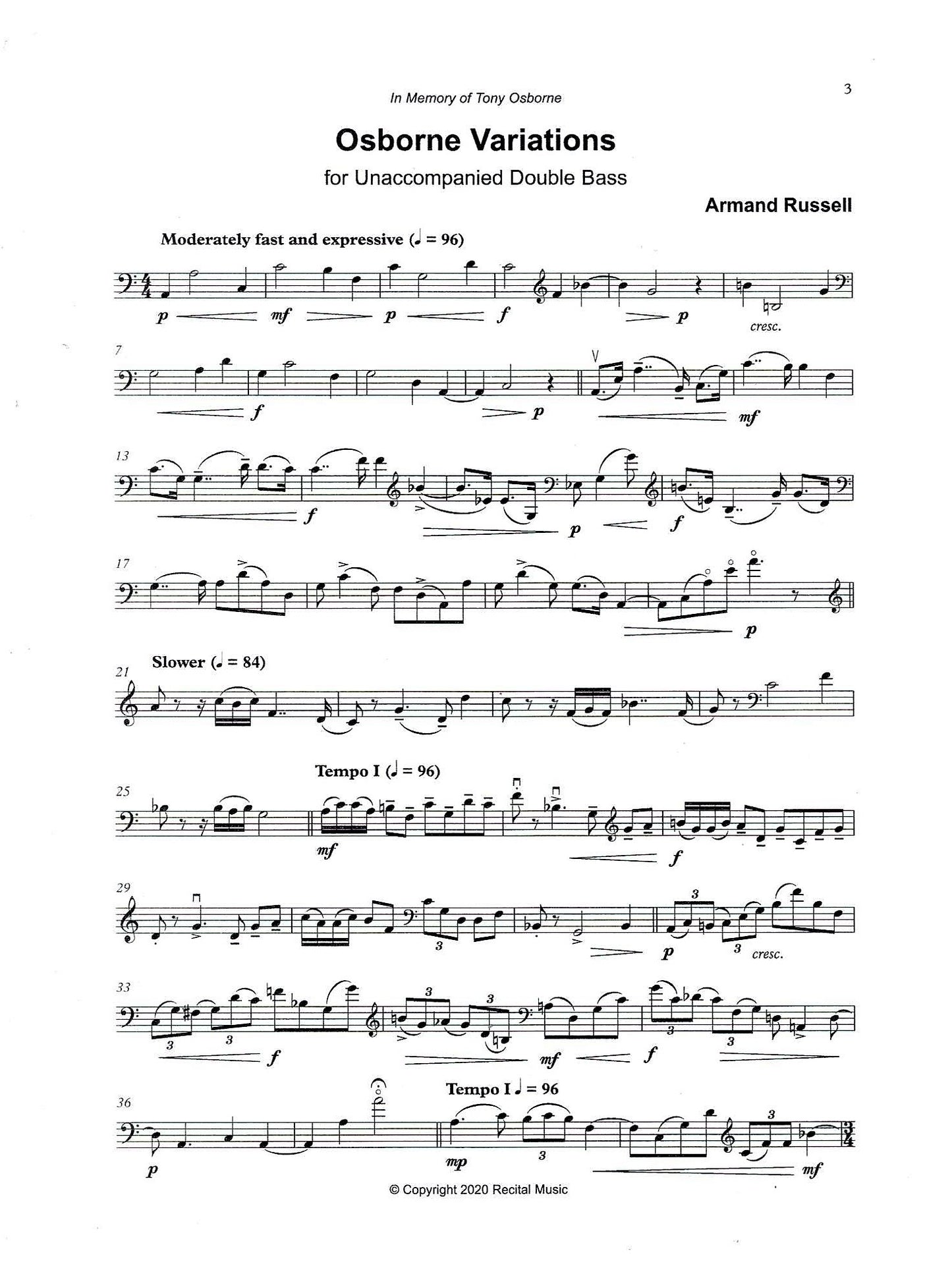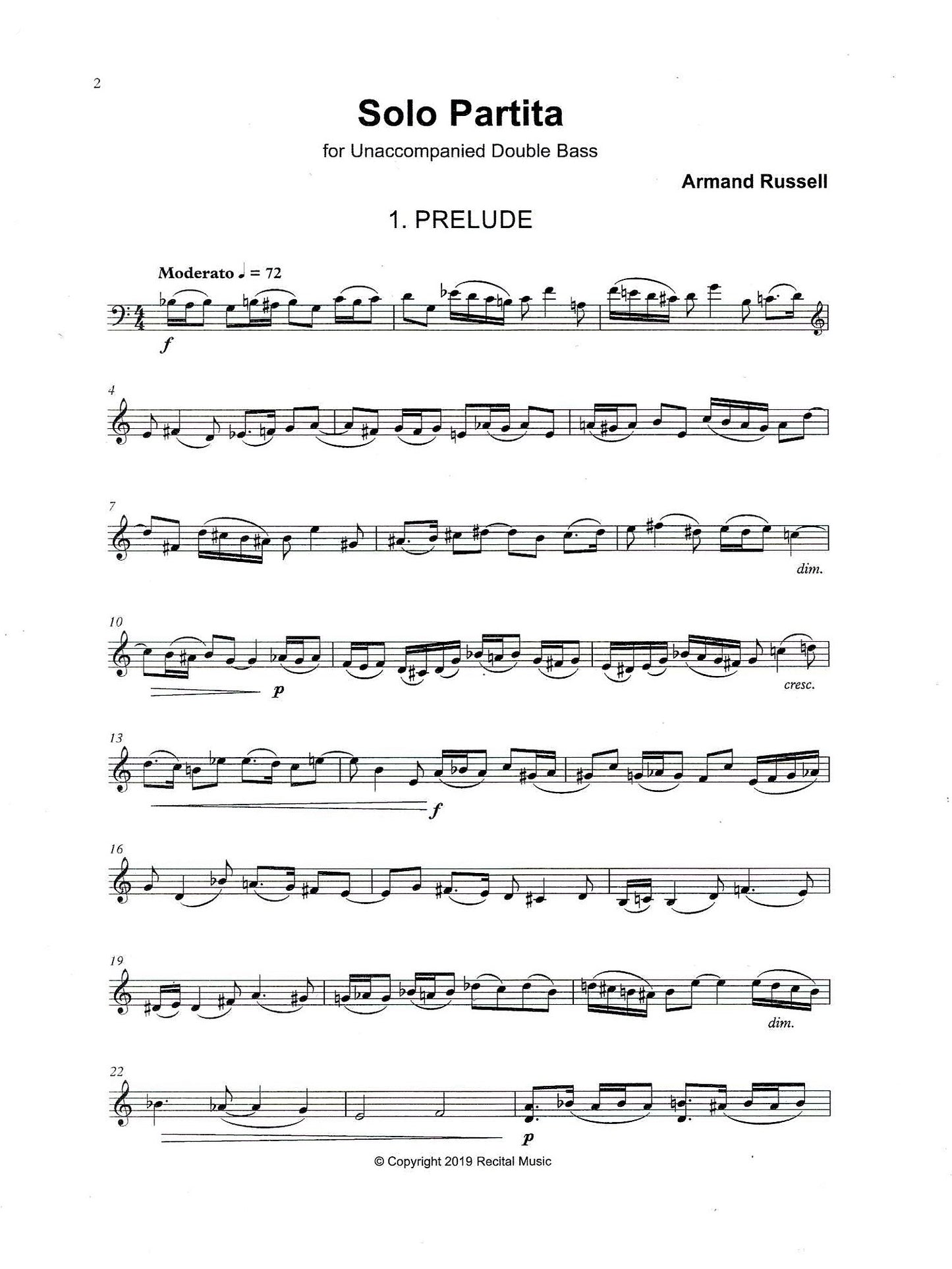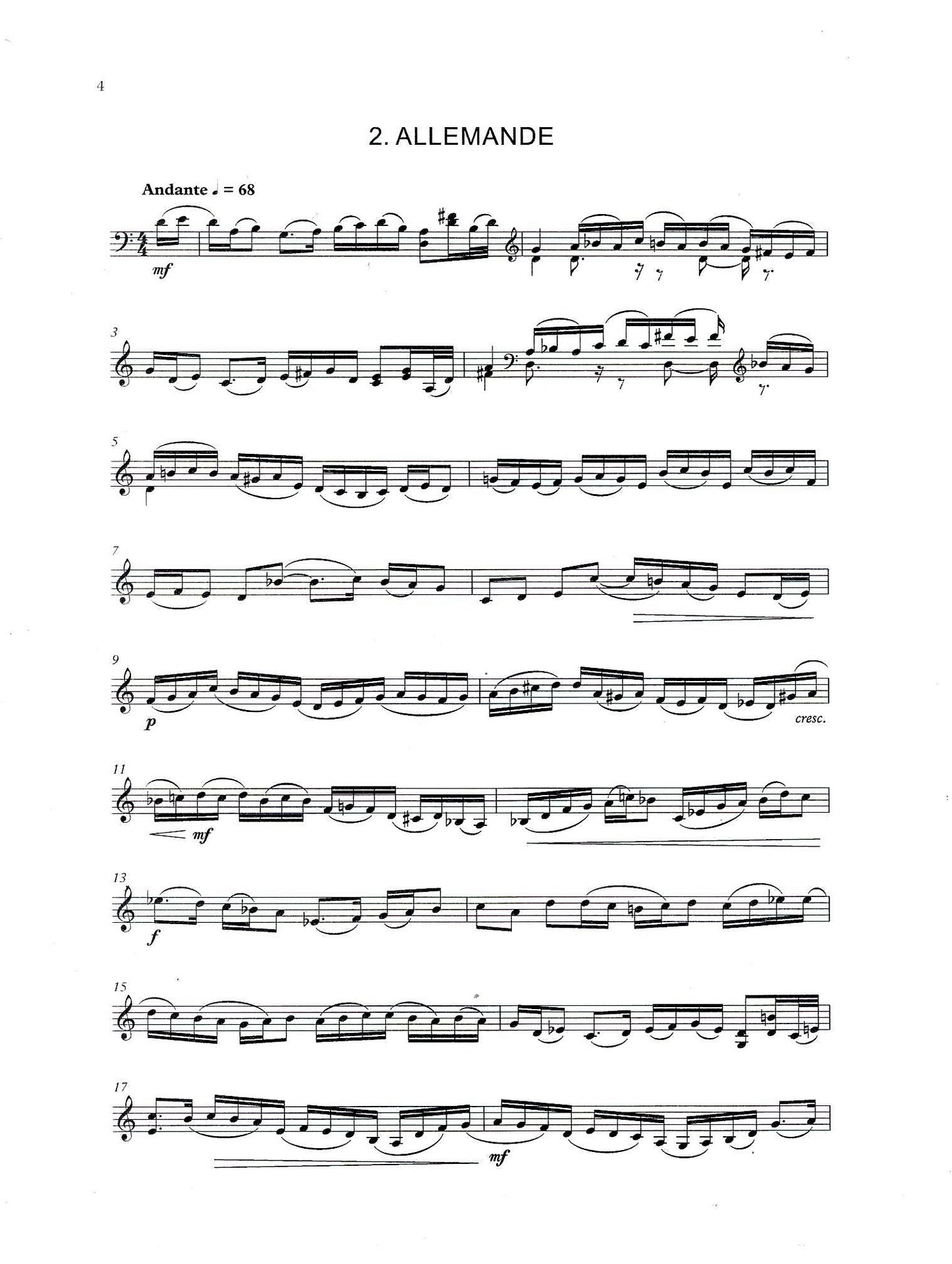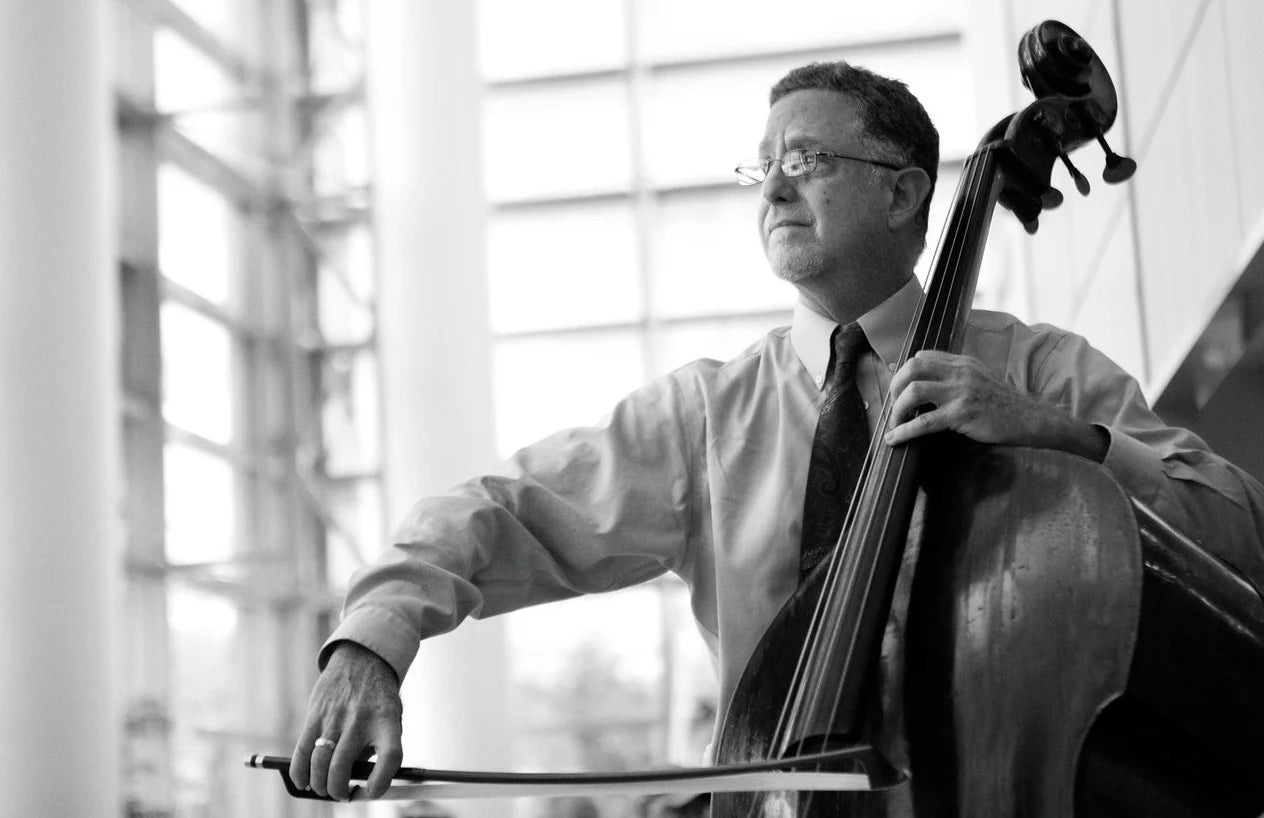David Heyes
Armand Russell: Celebrations Book 10 for unaccompanied double bass
Armand Russell: Celebrations Book 10 for unaccompanied double bass
Couldn't load pickup availability
Table of Contents
Osborne Variations
This work is called Variations since the overall approach to the form is akin to a theme with a series of sections that are related to the theme. However, these variations employ a wide assortment of methods to connect with the theme including many different melodic and harmonic linkages.
Osborne refers to the composer and double bass player Tony Osborne (1947-2019) in whose memory the work is written. His name has eleven letters which are converted from his name to a melodic theme. A method was devised to convert these letters, TONYOSBORNE, into a series of pitches that are used for the initial appearance of the central theme of the work. Some of the pitches are repeated in different octaves in the initial statement to enhance the melodic contour.
The purpose in using this conversion for the basic theme, which permeates the whole work in diverse ways, is to make the memory of Tony an integral influence on the essence of the work.
Preludes & Nocturnes
Preludes & Nocturnes is dedicated to David Heyes who indefatigably supports new music for the double bass.
Preludes & Nocturnes consists of five brief movements each with a descriptive adjective. The Preludes are the first, middle and last movements. A touch of irony is suggested in that the last movement is a Prelude. The two Nocturnes are written to imply three voices by the one, solo double bass. These tranquil and restive Nocturnes are expressive and somewhat slower by comparison with the assertive, capricious and whimsical Preludes. Each movement lasts approximately one minute in length and they may be performed separately or in various combinations at the performers discretion.
Solo Partita
1. Prelude 2. Allemande 3. Sarabande 4. Bourrée 5. Gigue
The Solo Partita was inspired by Baroque models, the solo cello suites of J.S. Bach in particular. As a ‘neo-baroque’ suite it contains three of the standard movements, Allemande, Sarabande and Gigue and two additional movements, a Prelude and a Bourrée.
About the Composer
Armand Russell was born in Seattle, Washington in 1932. He received the Bachelor of Arts and Master of Arts degrees from the University of Washington, with a major in music composition, and a Doctorate in music composition from the Eastman School of Music. He studied double bass with Leslie Martin, who played in the Seattle Symphony and Boston Symphony Orchestras, and at the Eastman School of Music with Oscar Zimmerman. His composition studies were with John Verrall and George McKay at the University of Washington, and with Bernard Rogers and Howard Hanson at the Eastman School.
Professionally, Armand Russell played double bass in many orchestras including the Seattle Symphony Orchestra, Boston Pops Tour Orchestra, Rochester Philharmonic and Civic Orchestras, and Honolulu Symphony. For five years he taught as a visiting Professor at the Eastman School of Music. From 1961 to 1994 he taught at the University of Hawaii Music Department and retired as Professor emeritus in 1994. While at the University of Hawaii he taught music theory, composition and double bass and also served as Chair of the Music Department for seven years.
Armand Russell's compositional style is confident and direct with a clarity of line and texture always to the fore. A modern, yet lyrical and accessible style, has created works which communicate equally to performers and audiences alike and he has made a unique and valuable contribution to the double bass literature throughout a long and successful career.
Armand Russell died in October 2022 at the age of 90 years.
